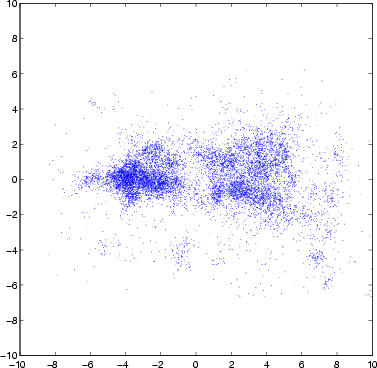
|
For more information on the DD method see:
Download the HypoDD software here. |
|
Double-difference Earthquake Location
The double-difference (DD) earthquake location algorithm has been developed to optimally relocate seismic events in the presence of measurement errors and earth model uncertainty. The fundamental equation of this iterative least-squares procedure relates the residual between the observed and predicted phase travel time difference for pairs of earthquakes observed at common stations to changes in the vector connecting their hypocenters through the partial derivatives of the travel times for each event with respect to the unknown. When the earthquake location problem is linearized using the double-difference equations, the common mode errors cancel, principally those related to the receiver-side structure. Thus we avoid the need for station corrections or high-accuracy of predicted travel times for the portion of the raypath that lies outside the focal volume. This approach is especially useful in regions with a dense distribution of seismicity, i.e. where distances between neighboring events are only a few kilometers or less. By linking hundreds or thousands of earthquakes together through a chain of near neighbors it is possible to obtain high-resolution hypocenter locations over large distances. The algorithm naturally accepts differential travel times as data, either from high-precision cross-correlation measurements, or from ordinary travel time picks, or a combination of both. Although the linearized double-difference equations would appear to produce only relative locations, experiments with synthetic data show that the iterated solutions converge toward the absolute locations despite gross differences between the velocity models used to create and model the data. |
| The double-difference algorithm has been implented in the computer program HypoDD, which has been extensively tested with data from permanent networks and aftershock arrays around the world, where it has demonstrated an ability to improve the image of seismicity in every case studied. The 'clouds' of hypocenters that are familiar to all seismologists typically sharpen into networks of discrete fault planes after relocation with hypoDD. Improvement in location precision of up to two orders of magnitudes over routine locations are achieved. The figure to the right shows epicenters of about 10,000 earthquakes that occured in the south moat of the Long Valley Caldera, California, during an intense period of unrest in 1997. The figure flips between images of seismicity before and after relocation: (1) Earthquakes located using analog telemetry stations of the USGS Northern California Seismic Network, using a minimum 1-D model and station corrections (diffuse cloud); (2) Locations produced with hypoDD using the same P-wave phase pick data (sharp seismicity location); (3) DD locations and superimposed fault map (red lines), revealing that this swarm occured on a complex system of faults, and thus represent a brittle failure process. |

|
|
For more information on the DD method see:
Download the HypoDD software here. |